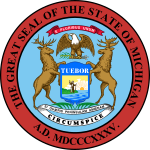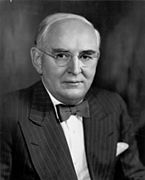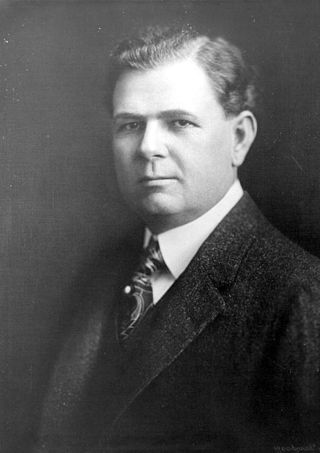
Park Monroe Trammell, was an American attorney and politician from the state of Florida. Trammell represented Florida in the United States Senate from 1917 until his death in 1936. As chair of the Senate Naval Affairs Committee, Trammell was essential in the creation of several laws that revitalized the United States Navy. Trammell previously served as the Governor of Florida and Florida Attorney General.

The 1958 United States Senate elections were elections for the United States Senate which occurred in the middle of President Dwight D. Eisenhower's second term. Thirty-two seats of Class 1 were contested in regular elections, the new state of Alaska held its first Senate elections for its Class 2 and 3 seats, and two special elections were held to fill vacancies.

The 1952 United States Senate elections was an election for the United States Senate which coincided with the election of Dwight D. Eisenhower to the presidency by a large margin. The 32 Senate seats of Class 1 were contested in regular elections, and three special elections were held to fill vacancies. The Republicans took control of the Senate by managing to make a net gain of two seats. However, Wayne Morse (R-OR) became an independent forcing Republicans to rely on Vice President Richard Nixon's tie-breaking vote, although Republicans maintained a 48–47–1 plurality. Throughout the next Congress, Republicans were able to restore their 49–46–1 majority. This was the third time, as well as second consecutive, in which a sitting Senate leader lost his seat.

The 1936 United States Senate elections coincided with the reelection of President Franklin D. Roosevelt. The 32 seats of Class 2 were contested in regular elections, and special elections were held to fill vacancies. The Great Depression continued and voters backed progressive candidates favoring Roosevelt's New Deal in races across the country. The Democrats gained 5 net seats during the election, and in combination with Democratic and Farmer–Labor interim appointments and the defection of George W. Norris from the Republican Party to become independent, the Republicans were reduced to 16 seats. Democrats gained a further two seats due to mid-term vacancies. The Democrats' 77 seats and their 62-seat majority remain their largest in history.
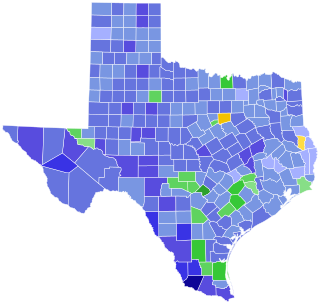
The 1934 United States Senate election in Texas was held on November 4, 1934. Incumbent Democratic U.S. Senator Tom Connally was re-elected to a second term. Connally fended off a competitive primary challenge from U.S. Representative Joseph Weldon Bailey Jr. on July 28 before facing only nominal opposition in the general election.

The 1934 United States Senate election in Tennessee was held on November 5, 1934. Incumbent Democratic Senator Kenneth D. McKellar was re-elected to a fourth term in office, defeating Republican former Governor Ben W. Hooper.

The 1934 United States Senate election in Minnesota took place on November 6, 1934. Incumbent Farmer–Labor U.S. Senator Henrik Shipstead defeated former State Senator Nathaniel J. Holmberg of the Republican Party of Minnesota and U.S. Representative Einar Hoidale of the Minnesota Democratic Party to win a third term.
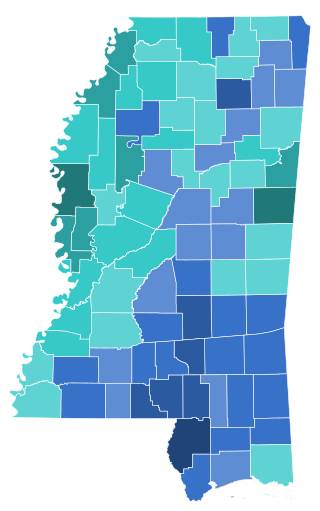
The 1934 United States Senate election in Mississippi was held on November 6, 1934. Incumbent Senator Hubert Stephens ran for re-election to a third term, but was defeated by Governor Theodore Bilbo in a close run-off election.

The 1926 United States Senate election in Illinois took place on November 2, 1926.

The 1956 United States Senate election in Idaho took place on November 6, 1956. Incumbent Republican Senator Herman Welker was defeated for re-election by Democratic nominee Frank Church.
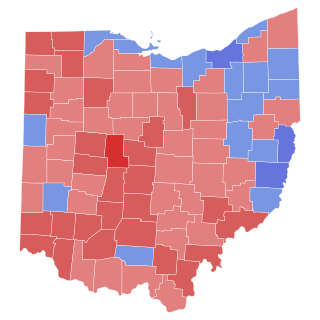
The 1968 United States Senate election in Ohio took place on November 5, 1968. Incumbent Senator Frank Lausche ran for re-election to a third term, but lost the Democratic primary to former U.S. Representative John J. Gilligan. Before losing the primary to the more solidly liberal Gilligan, Lausche had one of the most conservative voting record among Senate Democrats, leaving the Democratic Party very disappointed. In the general election, Gilligan lost to Republican Ohio Attorney General William Saxbe in a close race. Saxbe's victory increased the number of Senate Republicans in the 91st Congress. He would serve 5 years in the Senate before being nominated by President Richard Nixon to be U.S Attorney General, he resigned the seat after being confirmed. Gilligan, who in January 1974 was serving as the Governor of Ohio, named Saxbe's successor.

The 1962 United States Senate election in Ohio took place on November 6, 1962. Incumbent Senator Frank Lausche was re-elected to a second term in office, easily defeating Republican attorney John Marshall Briley.

The 1934 United States Senate election in New York was held on November 6, 1934, to elect a U.S. Senator. Incumbent Democratic Senator Royal Copeland was re-elected to a third term in office, though he would die in office in 1938.

The 1952 United States Senate election in Michigan was held on November 4, 1952 alongside a special election to the same seat.
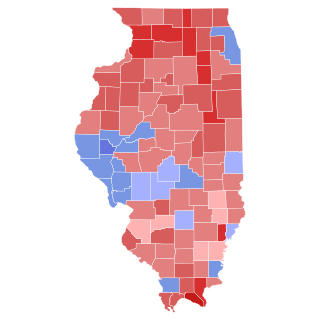
The 1918 United States Senate election in Illinois took place on November 5, 1918.

The 1928 United States Senate election in Missouri was held on November 6, 1928. Incumbent Democratic U.S. Senator James A. Reed did not run for re-election to a third term. Republican U.S. Representative Roscoe C. Patterson defeated Democrat Charles Hay to win the open seat.

The 1940 United States Senate election in Michigan was held on November 5, 1940.

The 1946 United States Senate election in Missouri was held on November 5, 1946.
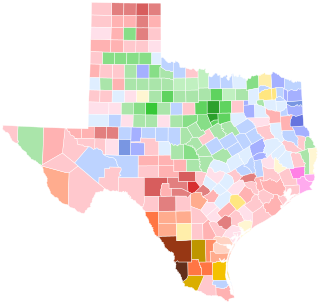
The 1961 United States Senate special election in Texas was held on May 27, 1961. The election was held to replace outgoing Senator Lyndon B. Johnson, who had been elected Vice President of the United States.

The 1972 United States Senate election in Michigan was held on November 7, 1972. Incumbent Republican U.S. Senator and Senate Minority Whip Robert P. Griffin ran for re-election to a second term, won reelection defeating the Democratic candidate, and Michigan Attorney General Frank J. Kelley by 6%. Despite President Richard Nixon’s landslide victory in Michigan and the rest of the country, Griffin’s margin of victory decreased from the previous election.

